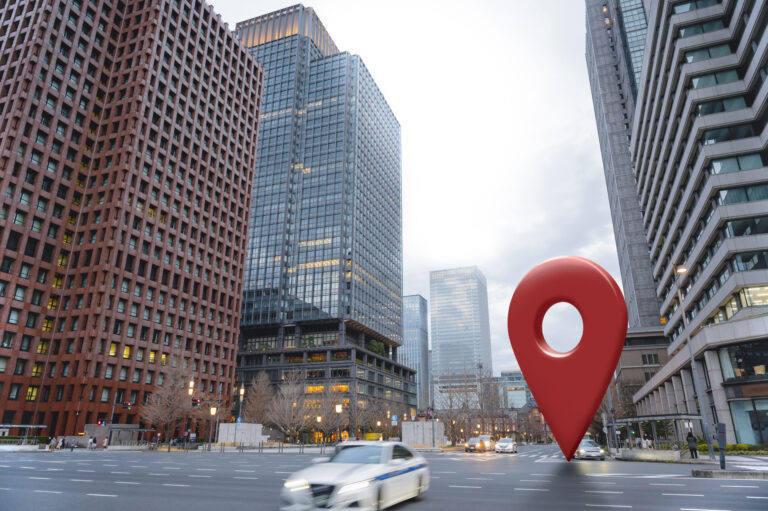Have you ever wondered why some businesses flourish while others struggle to even break even, despite offering similar products or services? The answer often lies in one overlooked key factor: location.
Choosing the right place to plant your business roots is more than a box to check; it’s a critical decision that can determine your operational costs, customer traffic, and long-term growth.
In fact, according to a study by the National Small Business Association (NSBA), over 20% of small businesses fail within the first year, and a major contributor is poor location choice.
Whether you’re opening a café, launching a startup, or expanding a franchise, understanding what to look for in a business location could be the difference between thriving and merely surviving.
Let’s explore the 15 most important factors you should consider—complete with expert insights and real statistics—to help you make the smartest choice.
1. Proximity to Target Market
Your business should be where your customers are—or where they can easily find you. This is especially important for brick-and-mortar businesses like restaurants, salons, and retail outlets. Choosing a location without considering your target audience is like opening a vegan store in a meat market—it simply won’t attract the right traffic.
A Retail TouchPoints study found that 78% of consumers will not travel more than 10 miles to reach a retail location. That means your customers need you nearby.
2. Cost of Rent and Utilities
Location affects cost—and often dramatically. Prime areas like city centers might offer more visibility but come with higher rent, taxes, and utility costs. Balancing cost with benefits is key.
According to Forbes, rent typically consumes 5% to 10% of a business’s gross income, while utilities account for another 2–5%. If the location costs too much, you may struggle to break even, especially in your early stages.
3. Zoning Regulations and Legal Compliance
It’s not just about where you want to set up shop—but where you’re allowed to. Cities and municipalities have zoning laws that regulate how land and buildings can be used. Ignoring these laws can shut you down before you even begin.
Example: You can’t legally open a bar in a residential zone, no matter how perfect the location looks on a map. Always consult local zoning offices before signing a lease.
4. Availability of Skilled Labor
If your business requires employees, consider whether the area has the labor pool to support it. Tech companies thrive in Silicon Valley for a reason—the talent pool is deep and accessible.
According to the Bureau of Labor Statistics, metro areas have a 30% higher concentration of skilled labor than rural regions, which can significantly affect your recruitment and operational efficiency.
5. Accessibility and Transportation Options
Even the best product won’t sell if your store is hard to find or reach. You need convenient transportation options not just for customers but also for staff and suppliers.
Studies show that 60% of consumers are more likely to visit a store that has easy parking, and proximity to public transit can improve employee punctuality and morale.
6. Visibility and Foot Traffic
Location visibility—how easily people can find or stumble upon your business—matters immensely. Foot traffic areas like malls, downtown streets, or busy junctions can increase spontaneous visits.
A survey by the International Council of Shopping Centers found that 70% of purchases in retail outlets are impulse-driven, influenced by visibility and walk-in accessibility.
7. Proximity to Competitors and Industry Clusters
Being close to your competitors isn’t always a bad thing. In fact, many businesses benefit from industry clusters (like fashion boutiques in a shopping district or food trucks around tech hubs) that attract a steady flow of customers.
According to Harvard Business Review, industry clustering can increase productivity by up to 25% due to shared customer traffic, skilled labor, and supplier networks.
8. Safety and Crime Rates
No customer or employee wants to feel unsafe. High crime rates not only deter foot traffic but can also increase insurance costs and risk your inventory and cash flow.
Neighborhood Scout reports that businesses in high-crime areas spend up to 20% more on insurance compared to those in safer zones. Always check local crime stats before committing.
9. Future Growth Potential of the Area
Don’t just think about today—consider the area’s future development plans. A currently quiet location may become a hotbed of activity in a few years due to planned residential developments or transportation upgrades.
According to Investopedia, locations with planned infrastructure improvements can boost property values and customer flow by over 40% in five years.
10. Taxation and Incentives
Different regions come with different tax burdens. Some states or municipalities offer tax incentives, grants, or subsidies to encourage new businesses, especially in underdeveloped areas.
For example, in the U.S., Opportunity Zones provide capital gains tax breaks to businesses that invest in low-income communities. This can significantly improve your bottom line.
11. Infrastructure and Technology Access
Your business location needs strong infrastructure—power, water, internet, and road networks. Poor infrastructure means frequent downtimes and unhappy customers.
According to the FCC, roughly 19 million Americans still lack access to high-speed internet, especially in rural areas. If your business depends on connectivity, don’t overlook this.
12. Branding and Location Image
The perception of your neighborhood can affect your brand. Luxury brands avoid low-income areas for a reason—it sends the wrong message. Your location should reflect your brand identity.
A Stanford University study noted that location image can influence consumer perception and loyalty by over 30%, proving that environment and image go hand-in-hand.
13. Nearby Amenities and Support Services
Customers and employees alike benefit from local conveniences—banks, food outlets, courier services, and ATMs. This improves the daily business flow and enhances staff satisfaction.
Happy employees stay longer. A Glassdoor survey revealed that employees who work in amenity-rich environments are 25% more satisfied with their jobs than those who don’t.

freepik
14. Competition Saturation
If your industry is too saturated in an area, entering the market might be more difficult unless you have a clear, unique value proposition. On the flip side, a lack of competition might signal low demand.
Do a competitive audit. According to SCORE, 85% of failed businesses admitted they didn’t analyze the local competition before launching.
15. Environmental and Regulatory Factors
Depending on your business, environmental regulations might play a role. Manufacturing or agricultural businesses must ensure they comply with EPA standards or risk shutdowns.
Also consider the environmental appeal. If you’re running a wellness center or eco-brand, customers may expect greenery, clean air, and sustainable surroundings.
Also Read: 5 Essential Financial Habits That Set Successful Entrepreneurs Apart from Struggling Ones
Don’t Rush—Research!
Choosing a business location is one of the most strategic decisions you’ll make. The wrong location can drain your resources, limit your customer reach, and threaten your long-term sustainability.
On the other hand, the right location acts like a silent partner—supporting your operations, enhancing your brand, and growing with you over time.
So before you sign that lease or buy that property, revisit these 15 factors.
Use tools like Google Maps for traffic analysis, local chamber of commerce reports for demographics, and real estate platforms for cost comparisons.
Talk to local business owners. Visit the area at different times of day. Do your homework.
Because in business, as in real estate, it’s all about one thing: location, location, location.



2 Comments
Pingback: 10 Ways to Manage Conflicts and Disagreements in a Business Team Without Losing Morale - Magic Media
Pingback: "Why Data Privacy Is the Key to Brand Loyalty in 2025" - Magic Media